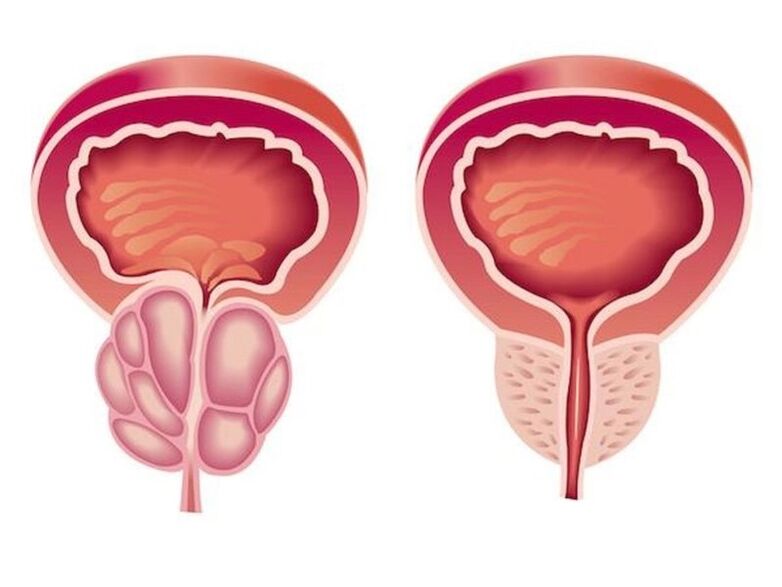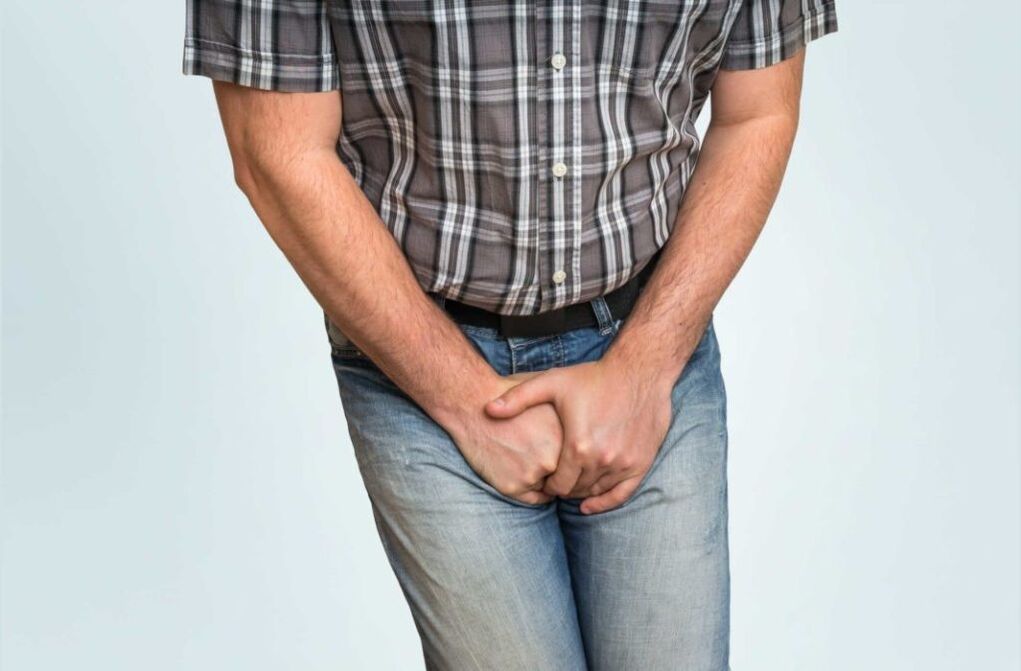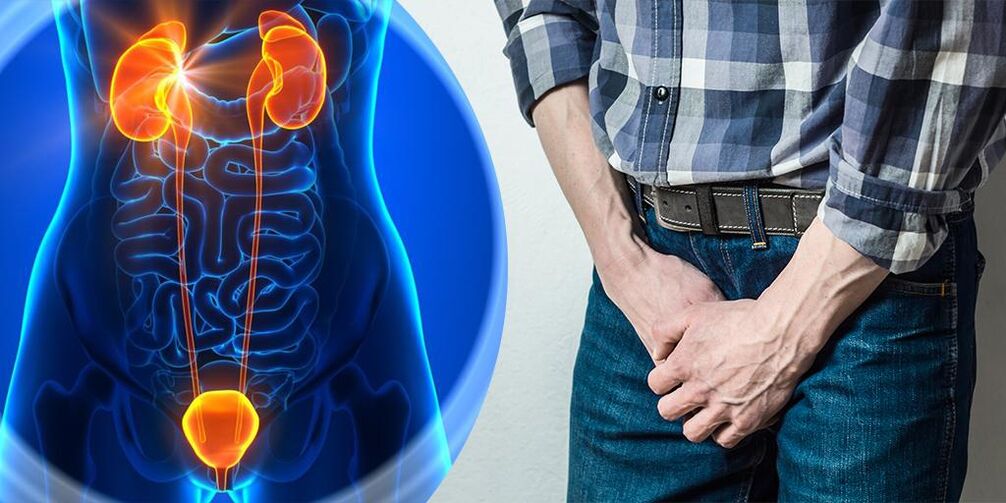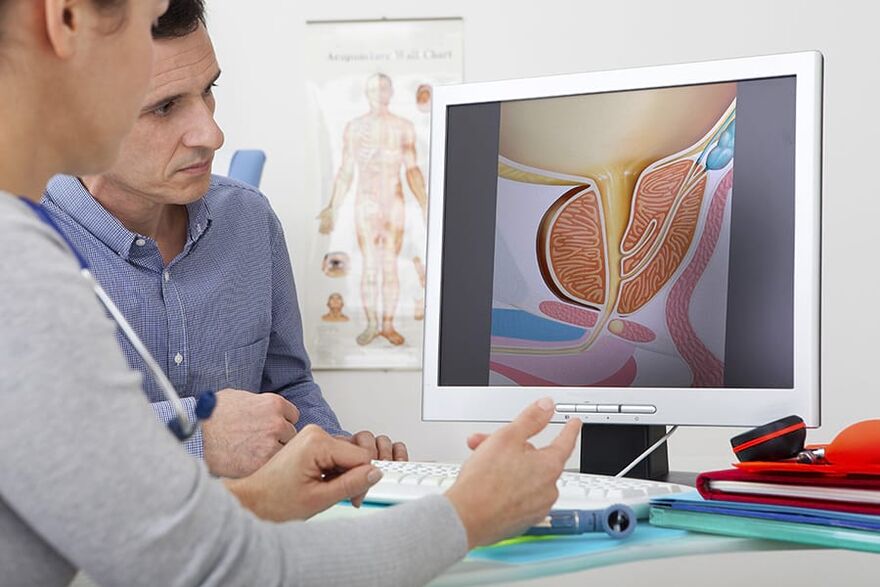Prostatitis is an inflammatory disease of the prostate gland. It is manifested by frequent toilet campaigns, pain in the penis, scrotum, rectum, sexual disorders (elevation, early ejaculation, etc. ), sometimes delayed urine and providing blood in the urine. The diagnosis of prostatitis is determined by another urologist or specialist in a typical clinical appearance, the results of a rectal study. Moreover, a prostate ultrasound is performed, which planted prostate and urine secretion bacteria. Conservative treatment - antibacterial therapy, immunotherapy, prostate massage, lifestyle correction.

General information
Prostatitis - inflammation of the seed gland (prostate) - prostate. The disease is the most common disease of the genitourinary system in men. Most often affect patients aged 25-50 years. In accordance with various data, the prostate suffers from 30-85% of men over the age of 30. Perhaps by abscess the prostate gland, inflammation of the testicles and supplements, which threatens infertility. The adhesion of the infection leads to inflammation of the upper parts of the genitourinary system (cystitis, pyelonephritis).
The pathology develops when an infectious agent is introduced, which enters the prostate fabric from the organs of the genitourinary system (urethra, bladder) or distant inflammatory concentration (with pneumonia, flu, tonsillitis, furunculosis).
The causes of prostate
A golden staphylococcus aureus (Enterococcus), Enterobacter (Enterobacter), Pseudomonas (Pseudomonas), Proteus (Proteus), and klebcelllah, and klebcelllah can act as an infectious agent in an acute process. (Klebsiella) and E. coli (E. coli). Most microorganisms belong to the conditional pathogenic flora and cause the prostate only if there are other predisposing factors. Chronic inflammation is usually caused by Paul with microbial associations.
The risk of developing the disease increases during hypothermia, the presence of infections and specific conditions in the history of blockages in the prostate tissue. The following predisposing factors are distinguished:
It is assumed that the risk of developing pathology increases with chronic intoxication (alcohol, nicotine, morphine). Some studies in the field of modern andrology prove that the provocative factor is a chronic turning injury (vibration, shock) in drivers, motorcyclists and cyclists. However, the overwhelming number of experts believes that all the circumstances listed are not real causes of the disease, but only contribute to the deterioration of the latent inflammatory process in the prostate tissue.
The decisive role in the emergence of prostatitis is played by stagnation in the prostate tissue. Violation of capillary blood flow causes an increase in peroxidation of lipids, edema, exudation of prostate tissue and forms conditions for the development of the infectious process.

Symptoms of prostatitis
Acute prostatitis
There are three stages of acute prostatitis, which are characterized by the presence of a certain clinical view and morphological changes:
Chronic prostatitis
In rare cases, chronic prostatitis becomes the result of an acute process, however, as a rule, a chronic primary course is observed. The temperature occasionally rises to small values. The patient observes poor pain in the perineum, discomfort during the act of urination and defecation. The most characteristic symptom is poor discharge from the urethra during the act of defecation. The primary chronic form of the disease develops over a considerable period of time. It is preceded by the stagnation of blood in the capillaries, gradually turning into abacterial prostate.
Chronic prostatitis is often a complication of the inflammatory process caused by the causative agent of a specific infection (chlamydia, ureaplasma, gonococcus). Symptoms of a specific inflammatory process in many cases mask manifestations of prostate lesion. It is possible a slight increase in pain during urination, poor pain in the perineum, low discharge from the urethra during defecation. A slight change in clinical appearance often passes unnoticed by the patient.
Chronic inflammation of the prostate gland can be manifested by a burning sensation in the urethra and perineum, dysuria, sexual disorders, increased fatigue. The consequence of violations of power (or fear of these violations) often becomes mental depression, anxiety and irritability. Clinical photography does not always include all listed groups of symptoms, varies in different patients and changes over time. There are three main syndrome characteristic of chronic prostatitis: pain, violation when you go to the toilet, sexual disorders.
There are no pain receptors in the prostate fabric. The cause of chronic prostate pain becomes almost inevitable due to the abundant intrigue of pelvic organs involvement in the inflammatory process of nerve trails. Patients complain of pain of varying intensity - from weak, painful to intense sleep, violating sleep. There is a change in the nature of the pain (improvement or weakening) by shed, excessive sexual activity or sexual abstinence. The pain radiates to a scrotum, sacrum, twist, sometimes in the lumbar region.

As a result of inflammation in chronic prostatitis, the volume of the prostate that squeezes the urethra increases. The ureter lumen decreases. The patient has frequent urination, a feeling of incomplete bladder emptying. As a rule, dysuric phenomena are expressed in the early stages. Then, the compensating hypertrophy of the bladder muscle layer and urethra develops. The symptoms of dysuria during this period are weakening, and then again increased during decompensation of adaptive mechanisms.
In the initial stages, applicable violations may develop, which manifest differently in different patients. Patients may complain of frequent night erections, deleted orgasm or deterioration of a rise. Accelerated ejaculation is associated with a decrease in the level of the center of harassment of the center, which is responsible for obtaining an orgasm. Pain for spilling can cause a refusal of sexual activity. In the future, sexual disorders become more pronounced. In an advanced stage, powerlessness develops.
The degree of sexual disorder is determined by many factors, including the sexual constitution and the patient's psychological state. Power violations and dysuria may be due to both changes in the prostate gland, and how easily the patient can inspire anything. If it has chronic prostate, it expects the inevitable development of sexual disorders and urination disorders. Especially often psychogenic disorders in power and toilet problems develop in suggestive, alarming patients.
Complications
In the absence of timely treatment of acute prostatitis, there is a significant risk of developing the abscess of the prostate gland. When the purulent focus is formed, the patient's body temperature rises to 39-40 ° C and can acquire a wild character. Heat periods alternate with pronounced chills. Sharp pain in the perineum complicates urination and makes it impossible to defecate.
Increased edema edema leads to acute delay of urination. In rare cases, the abscess opens spontaneously to the urethra or rectum. When you open in the urethra, muddy purulent urine appears with a harsh unpleasant odor, when opening on the rectum, the feces contain pus and mucus.
For chronic prostate, a wave -like course with periods of prolonged remission is characteristic, during which inflammation in the prostate continues latent or manifested in extremely scarce symptoms. Patients, who do not bother, often stop treatment and become only with the development of complications.
The most common complication of the chronic process is inflammation of the testicles and supplements to the testicles and inflammation of the seed bubbles. The result of these diseases often becomes infertility.
Troubleshooting

A characteristic clinical appearance simplifies the process of diagnosis in acute and chronic prostatitis. Has become mandatory:
Treatment of prostatitis
Treatment of acute prostatitis
Patients with an acute process without complications are subject to a course of treatment with a urologist in an outpatient way. With severe intoxication, suspicion of a purulent process, hospitalization is indicated. Antibacterial therapy is performed. The drug is chosen taking into account the sensitivity of an infectious agent. Antibiotics are widely used that can penetrate well into prostate tissue (ciprofloxacin, etc. ).
With the development of acute delay of urination, against the background of prostate, they use the installation of a particular tube, and not a urethral catheter because there is a risk of forming a prostate abscess. With the development of the abscess, an endoscopic transchectal or urethral abscess is performed.
Treatment of chronic prostatitis
Chronic prostatitis treatment should be complex, including ethotropic therapy, physiotherapy, immune correction:
In chronic, long -term inflammation, a consultation of an immunologist is about the choice of immunocorrogative therapy tactics. The patient is given recommendations for a lifestyle change. The introduction of some changes in a patient's lifestyle with chronic prostate is both therapeutic and a preventative measure. The patient is recommended to normalize sleep and awakening, create a diet and perform moderate physical activity.

Forecasting and prevention
Acute prostatitis is a disease that has a pronounced tendency for chronic. Even with adequate timely treatment, more than half of patients, chronic prostatitis becomes the result. Recovery is not always possible, however, with proper sequential therapy and compliance with the doctor's recommendations, it is possible to eliminate unpleasant symptoms and achieve a long pardon in the chronic process.
Prevention consists in eliminating risk factors. It is necessary to avoid hypothermia, sedentary alternative work and periods of physical activity, and eat regularly and completely. With constipation, laxatives should be used. One of the preventive measures is normalizing sex life, as excessive sexual activity and sexual abstinence are risk factors in prostate development. If the symptoms of a urological or sexually transmitted disease appear, you should consult a doctor in a timely manner.
























